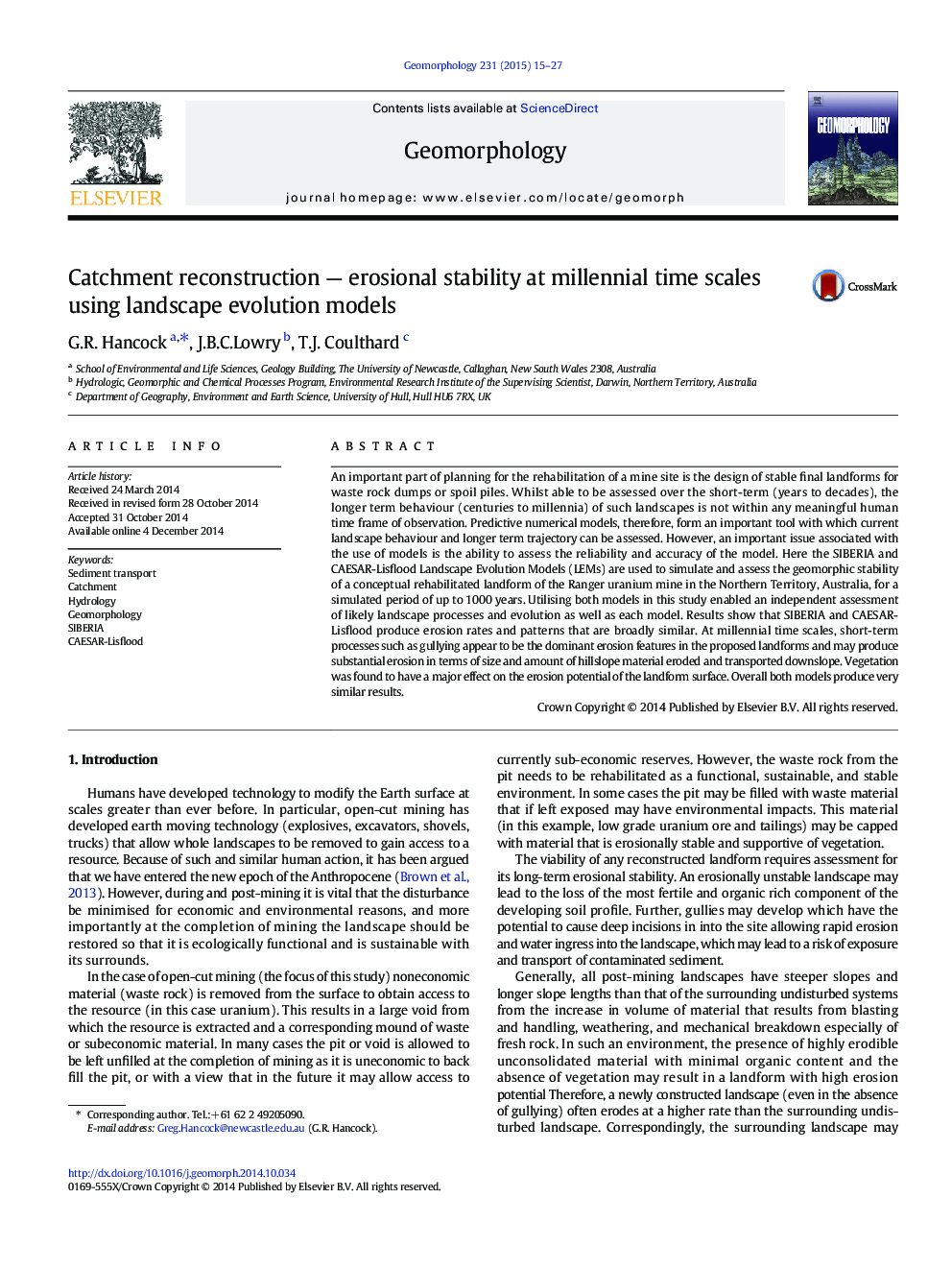| کد مقاله | کد نشریه | سال انتشار | مقاله انگلیسی | نسخه تمام متن |
|---|---|---|---|---|
| 4684315 | 1635418 | 2015 | 13 صفحه PDF | دانلود رایگان |
An important part of planning for the rehabilitation of a mine site is the design of stable final landforms for waste rock dumps or spoil piles. Whilst able to be assessed over the short-term (years to decades), the longer term behaviour (centuries to millennia) of such landscapes is not within any meaningful human time frame of observation. Predictive numerical models, therefore, form an important tool with which current landscape behaviour and longer term trajectory can be assessed. However, an important issue associated with the use of models is the ability to assess the reliability and accuracy of the model. Here the SIBERIA and CAESAR-Lisflood Landscape Evolution Models (LEMs) are used to simulate and assess the geomorphic stability of a conceptual rehabilitated landform of the Ranger uranium mine in the Northern Territory, Australia, for a simulated period of up to 1000 years. Utilising both models in this study enabled an independent assessment of likely landscape processes and evolution as well as each model. Results show that SIBERIA and CAESAR-Lisflood produce erosion rates and patterns that are broadly similar. At millennial time scales, short-term processes such as gullying appear to be the dominant erosion features in the proposed landforms and may produce substantial erosion in terms of size and amount of hillslope material eroded and transported downslope. Vegetation was found to have a major effect on the erosion potential of the landform surface. Overall both models produce very similar results.
Journal: Geomorphology - Volume 231, 15 February 2015, Pages 15–27
